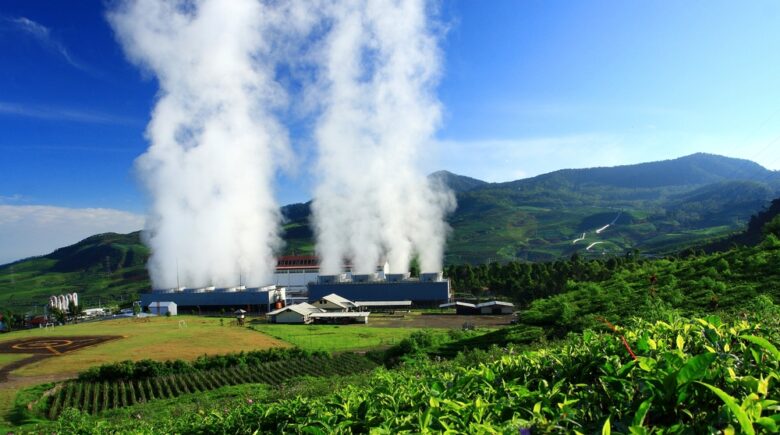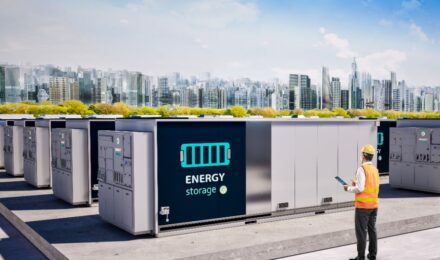As the global focus shifts increasingly toward renewable energy, geothermal energy continues to hold a promising—yet largely underexploited—position. Unlike wind and solar, geothermal energy has not seen widespread adoption, despite its vast potential. If effectively harnessed, it could provide up to 25% of the world’s energy needs, offering a path toward a more sustainable future.
To better understand why geothermal energy remains underutilized, it’s essential to examine both its advantages and the challenges that hinder its growth.
The Benefits of Geothermal Energy
1. Reliability
One of the most significant advantages of geothermal energy is its reliability. Unlike solar and wind power, which depend on weather conditions, geothermal systems can operate 24/7. This consistent energy production is possible because the Earth’s internal heat remains constant throughout the day and night. With the right infrastructure and investment, geothermal energy could support the uninterrupted energy demands of a modern economy.
2. Clean and Sustainable
Geothermal energy is a clean source of power, with carbon emissions comparable to other renewable sources like wind and solar. It can be used not only to generate electricity but also for direct heating applications—such as warming homes, greenhouses, or industrial facilities—by utilizing the Earth’s natural heat.
3. Widespread Availability
Although geothermal resources are more accessible in certain regions—particularly those with volcanic or seismic activity—modern drilling technologies make it possible to tap into geothermal energy in many parts of the world. Strategic deployment and advanced equipment allow for effective use even in less ideal locations.
Why Geothermal Energy Is Still Underused
Despite its promise, several key obstacles have prevented geothermal energy from reaching its full potential. These include technological, economic, legal, and political challenges.
1. Technological and Geological Limitations
Although geothermal energy is technically available around the globe, accessing it safely and efficiently is often complicated. High temperatures, varying rock permeability, and the presence of underground fluids and gases make drilling risky and expensive. These geological challenges can limit both the safety and scalability of geothermal projects.
2. Economic Barriers
Developing geothermal energy infrastructure requires significant upfront investment. The costs of drilling, exploration, and equipment can be prohibitively high, especially for private firms without government backing. Additionally, investors are often hesitant to commit without guaranteed power purchase agreements (PPAs), which ensure that the electricity produced will be bought at a fixed rate. Without strong investor confidence and clear financial pathways, geothermal projects struggle to move forward.
3. Land Access and Legal Hurdles
Prime geothermal sites are often located on land that is government-owned, privately held, or environmentally protected. Securing the necessary permits and permissions can be a long, complicated process involving multiple stakeholders. Delays in land acquisition or permit approval often stall or cancel projects altogether.
4. Transmission and Infrastructure Challenges
Many geothermal resources are found in remote areas, far from existing electrical transmission networks. Building new transmission lines and connecting to the grid can add significantly to project costs. If the overall cost of geothermal electricity exceeds that of other energy sources—renewable or fossil—these projects may be deemed economically nonviable.
Unlocking the Future of Geothermal Energy
The under utilization of geothermal energy is not due to a lack of potential but rather to a complex mix of technological, financial, and regulatory barriers. However, progress is being made. Investments in research and development, as well as increased government support through incentives and favorable policies, are beginning to change the landscape.
Governments around the world have introduced measures like tax credits and grants to attract private investment in geothermal projects. These steps are encouraging, but a more coordinated effort is needed. To truly unlock geothermal energy’s potential, public and private sectors must collaborate to:
- Simplify legal and regulatory frameworks
- Improve drilling and exploration technologies
- Ensure easier access to viable land
- Reduce the financial risk for investors
With the right investments and reforms, geothermal energy could become a cornerstone of global clean energy systems—providing stable, sustainable heating, cooling, and power for generations to come.
As the global focus shifts increasingly toward renewable energy, geothermal energy continues to hold a promising—yet largely underexploited—position. Unlike wind and solar, geothermal energy has not seen widespread adoption, despite its vast potential. If effectively harnessed, it could provide up to 25% of the world’s energy needs, offering a path toward a more sustainable future.
To better understand why geothermal energy remains underutilized, it’s essential to examine both its advantages and the challenges that hinder its growth.
The Benefits of Geothermal Energy
1. Reliability
One of the most significant advantages of geothermal energy is its reliability. Unlike solar and wind power, which depend on weather conditions, geothermal systems can operate 24/7. This consistent energy production is possible because the Earth’s internal heat remains constant throughout the day and night. With the right infrastructure and investment, geothermal energy could support the uninterrupted energy demands of a modern economy.
2. Clean and Sustainable
Geothermal energy is a clean source of power, with carbon emissions comparable to other renewable sources like wind and solar. It can be used not only to generate electricity but also for direct heating applications—such as warming homes, greenhouses, or industrial facilities—by utilizing the Earth’s natural heat.
3. Widespread Availability
Although geothermal resources are more accessible in certain regions—particularly those with volcanic or seismic activity—modern drilling technologies make it possible to tap into geothermal energy in many parts of the world. Strategic deployment and advanced equipment allow for effective use even in less ideal locations.
Why Geothermal Energy Is Still Underused
Despite its promise, several key obstacles have prevented geothermal energy from reaching its full potential. These include technological, economic, legal, and political challenges.
1. Technological and Geological Limitations
Although geothermal energy is technically available around the globe, accessing it safely and efficiently is often complicated. High temperatures, varying rock permeability, and the presence of underground fluids and gases make drilling risky and expensive. These geological challenges can limit both the safety and scalability of geothermal projects.
2. Economic Barriers
Developing geothermal energy infrastructure requires significant upfront investment. The costs of drilling, exploration, and equipment can be prohibitively high, especially for private firms without government backing. Additionally, investors are often hesitant to commit without guaranteed power purchase agreements (PPAs), which ensure that the electricity produced will be bought at a fixed rate. Without strong investor confidence and clear financial pathways, geothermal projects struggle to move forward.
3. Land Access and Legal Hurdles
Prime geothermal sites are often located on land that is government-owned, privately held, or environmentally protected. Securing the necessary permits and permissions can be a long, complicated process involving multiple stakeholders. Delays in land acquisition or permit approval often stall or cancel projects altogether.
4. Transmission and Infrastructure Challenges
Many geothermal resources are found in remote areas, far from existing electrical transmission networks. Building new transmission lines and connecting to the grid can add significantly to project costs. If the overall cost of geothermal electricity exceeds that of other energy sources—renewable or fossil—these projects may be deemed economically nonviable.
Unlocking the Future of Geothermal Energy
The under utilization of geothermal energy is not due to a lack of potential but rather to a complex mix of technological, financial, and regulatory barriers. However, progress is being made. Investments in research and development, as well as increased government support through incentives and favorable policies, are beginning to change the landscape.
Governments around the world have introduced measures like tax credits and grants to attract private investment in geothermal projects. These steps are encouraging, but a more coordinated effort is needed. To truly unlock geothermal energy’s potential, public and private sectors must collaborate to:
- Simplify legal and regulatory frameworks
- Improve drilling and exploration technologies
- Ensure easier access to viable land
- Reduce the financial risk for investors
With the right investments and reforms, geothermal energy could become a cornerstone of global clean energy systems—providing stable, sustainable heating, cooling, and power for generations to come.



